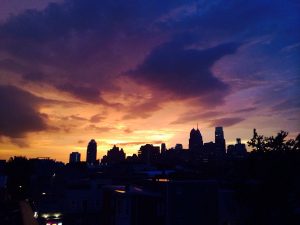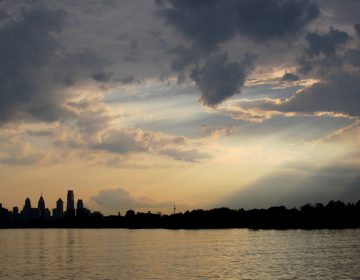‘Quality of Life’ is Philadelphia’s biggest selling point. Can it survive an Amazonian invasion?
Philadelphia’s pitch to Amazon could be boiled down to three little words: Quality of life.
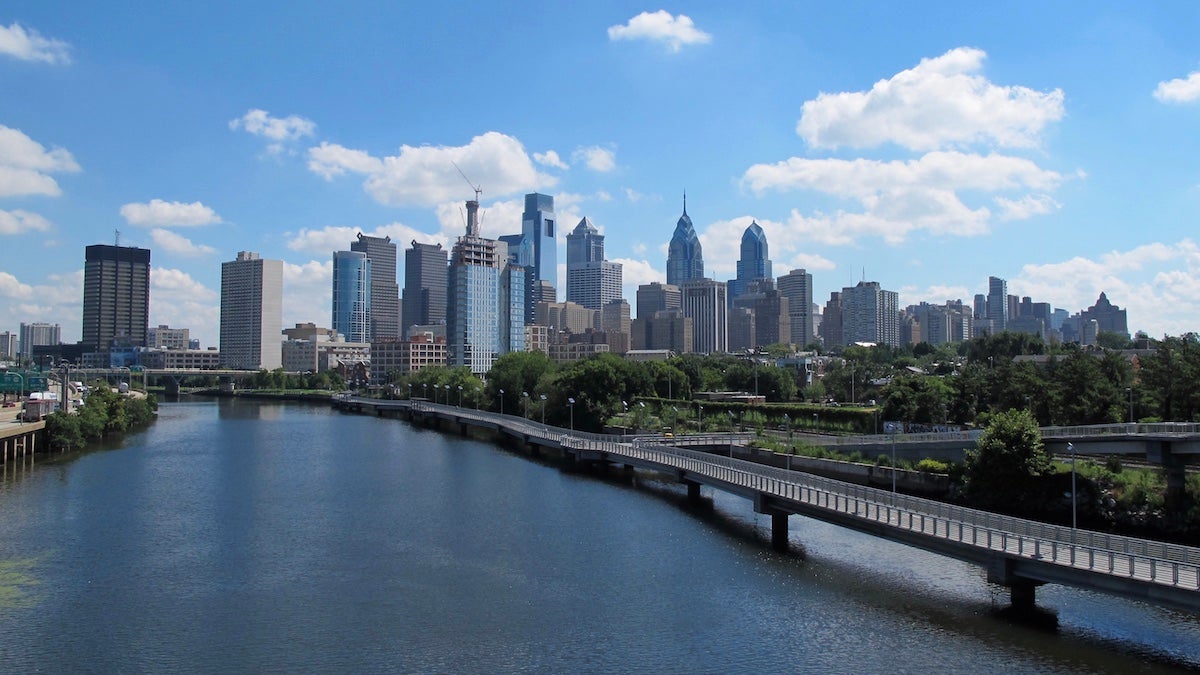
The Philadelphia skyline (Ashley Hahn / WHYY)
Like nearly every other city in North America, Philadelphia is putting the final touches on its bid to convince Amazon to build its second headquarters here ahead of Thursday’s deadline. The tech giant is making big promises to the winner: a $5 billion dollar investment and 50,000 high-paying jobs. In a series, PlanPhilly is using Amazon’s request for proposals (RFP) as a lens to examine the costs and benefits of doing business in our region.
Today’s final installment: Philadelphia’s pitch to Amazon could be boiled down to three little words: Quality of life. What would happen to Philadelphia’s mix relatively high concentration of attractive amenities and relatively low lost of living if Amazon came?
—
If you ask someone why Amazon, or anyone else for that matter, should move to Philadelphia, you’ll inevitably hear one particular three word phrase: Quality of life.
Quality of life is shorthand for those ineffable elements that make somewhere a pleasant place to live. Many try to quantify a city’s quality of life by counting things like bars, restaurants, parks and museums.
But you can’t put a number on love. And people move to Philadelphia simply because they fall in love with it.
Abe Kwon “really fell in love with the city,” as a freshman at the University of Pennsylvania. Kwon was born here, but grew up in Salt Lake City. Unlike many of his peers, he didn’t let the “Penn Bubble” hold him back from exploring beyond campus. He liked the city’s nightlife and dining options, and the sense there was always something happening downtown. Kwon stuck around for law school, staying at Penn, but like so many of his undergraduate and law school friends, he left in 2011 for New York City.
But despite the big lights and superior Korean options (the Korean spots near Oxford Circle don’t quite do the trick), Kwon found himself missing Philadelphia.
“Pretty quickly on, I knew I wanted to come back to Philly,” he said. Philly had pretty much everything New York had to offer Kwon, only for a far more reasonable price and without incessantly long lines.
When he moved back in 2014, Kwon wasn’t alone. In recent years, around 25,000 New Yorkers traded in their bagels for some soft pretzels. Some Philadelphians make the opposite move, but the intercity trade has net Philly around 5,000 residents annually in recent years. Many of the Turnpike travelers cite Philly’s quality of life and affordability for drawing them here. In Philly, you can actually afford to buy a home.
That’s why Alexa Adams moved from Manhattan to Fairmount three years ago. After stints in Brooklyn, San Diego, and San Francisco, Adams, a software consultant for nonprofits, found herself living in Midtown Manhattan in a rent-stabilized one bedroom sublet just blocks from Central Park. It was wonderful, but the her sublet was ending, and she faced the prospect of seeing her rent triple. Faced with the prospect of another move to another apartment, she started looking beyond New York City.
“It just never really felt like it could be permanent, mainly because of the cost of living,” she said. Adams said she heard a radio story of a Brooklyn woman forced to leave her home of many decades after a rent increase, and it scared her.
“I saw my future flash before me, that I would eventually be priced out,” she said.
Adams, who works remotely for a San Francisco-based company, started scouring Philly real estate listings. She had only visited the city a few times, and didn’t know Belmont from Bella Vista. After a few short visits, she bought a place in Fairmount, still not completely sure what she was getting into. “I thought it would be a little too quiet, almost suburban,” she said. Now she loves the walkability, the quick bike ride to Fairmount Park’s hills, the sense of being part of a tight-knit community, how easily she’s been able to get involved, civically. “I love it here,” Adams attests.”I think it’s a great city with a lot of character. I don’t see myself ever leaving. It’s a great place.”
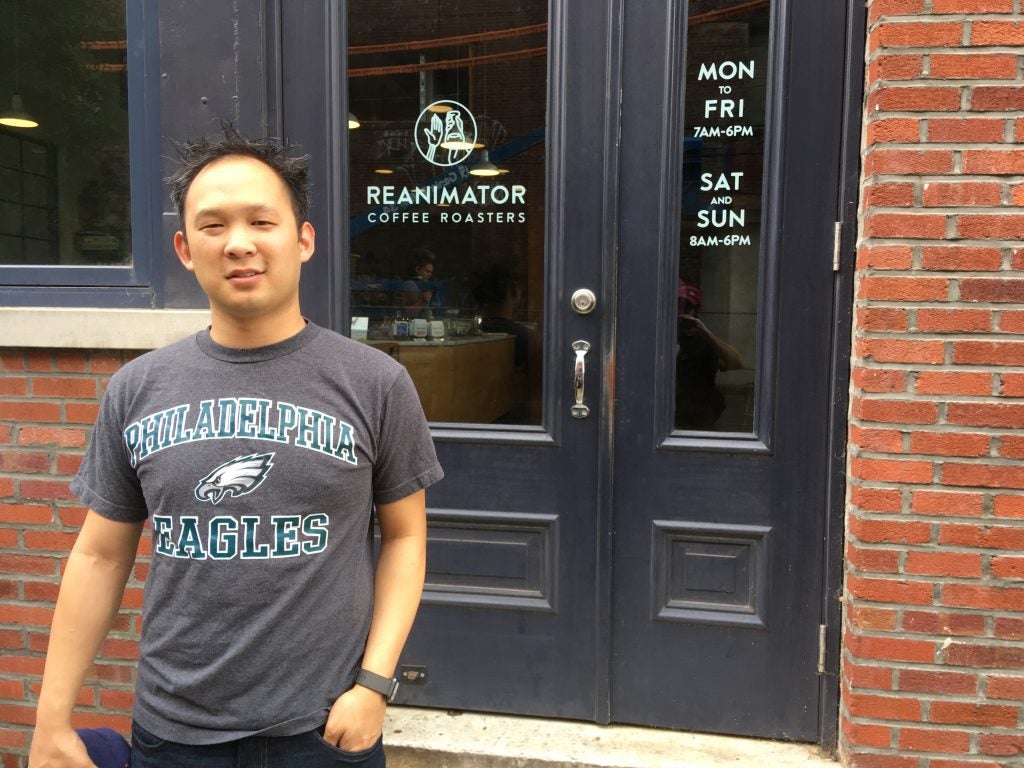
To young professionals like Kwon and Adams, Philadelphia has a bit of a Goldilocks’-esque appeal. Philadelphia is not too hot (compared to the scorching hot real estate markets in New York, San Francisco, and Washington D.C., Philadelphia remains very affordable), nor too cool (the city is growing in both population and employment, albeit slowly, allaying fears of making a bad long-term investment).
Their unabashed exclamations of affinity towards the city also highlight the folly of trying to quantify quality of life. While neither Kwon nor Adams ignore the challenges the city faces — both spoke unprompted about the city’s staggering poverty rates and struggling schools — those problems do not confront them directly all that often. Bad schools remain an abstract problem until you have kids of a certain age, and there are enough public schools with good reputations in the city to allay the fears that would otherwise send most parents with the means fleeing to the suburbs. Poverty and the attendant crimes are largely concentrated in some of Philadelphia’s outlying neighborhoods — places a Queen Village resident working in University City may never even need to pass through, let alone spend some time in. Those factors help keep housing prices low across the city, while many residents can spend most of their days in bubbles of relative prosperity, safety, and comfort.
When companies like Amazon consider quality of life, they consider it in the neighborhoods where their would-be employees may want to live and work, not the city or region as a whole. Philadelphia offers dozens of neighborhoods with an appealing mix of green parks, hip bars, decent schools, solid transportation options, and yet still affordable homes. The horrors of Kensington’s drug markets, the violence of North Philly’s streets, and lingering decay of Hunting Park may be geographically close to many city residents, but they remain a world apart.
And, so, the city’s mix of affordable prices and plentiful amenities remains one of the city’s biggest selling points to new residents and businesses alike. “We have this really unique balance of quality of life and cost of living compared to competitors,” said Josh Sevin, acting executive director of the Economy League of Greater Philadelphia.
Sevin doesn’t shy away from the city’s considerable challenges. But he believes that Philadelphia must spend more time selling its upside — quality of life chief among them — rather than focusing entirely on the negatives. And, he says, it’s already happening, and not just among the business community.
“It’s not just a few economic development types putting it out there — it really gets into the water when you have everyday Philadelphians — it isn’t their business to attract business here — hitting the same notes about what makes this place special and unique as an economic opportunity,” he said.
In the weeks leading up to the Amazon bid, that positive message, focused on the city’s high quality of life and low cost of living, was repeated by nearly everyone with an interest in landing Amazon. Bob Moul, a successful serial entrepreneur, offered a pithy version of a common refrain among the tech and startup community: Philadelphia has “the best ratio of business opportunities to quality of life of any city you ever could possibly live in. I personally don’t feel like I give up that much in terms of business opportunities, and I have an amazing quality of life.”
That delicate balance between affordability and amenities has some worried about what would happen if Amazon did pick Philadelphia for its second headquarters. Until now, Philadelphia has remained a bargain for the middle class, offering a median home price of $159,900, around half the national average. What would happen to Philadelphia’s affordability if Amazon invaded with 50,000 employees earning an average of $100,000 to a city where the median income is just $41,000.
“It’ll be an economic detonator in both the benefit and cost sense,” said Kevin Gillen, a real estate economist at Drexel University and Houwzer. “Certainly, it’ll bring a lot of money and jobs into the region, but there are prices to that as well: increased traffic congestion, decreased housing affordability, things like that.”
Fifty thousand Amazonians would be just the start. Enrico Moretti, an economist at University of California, Berkeley, estimates that every one high-tech job creates five more. Companies as big as Amazon may have an ever larger multiplier effect, as they draw in more supplemental companies — vendors, suppliers, and the such — by their sheer size.
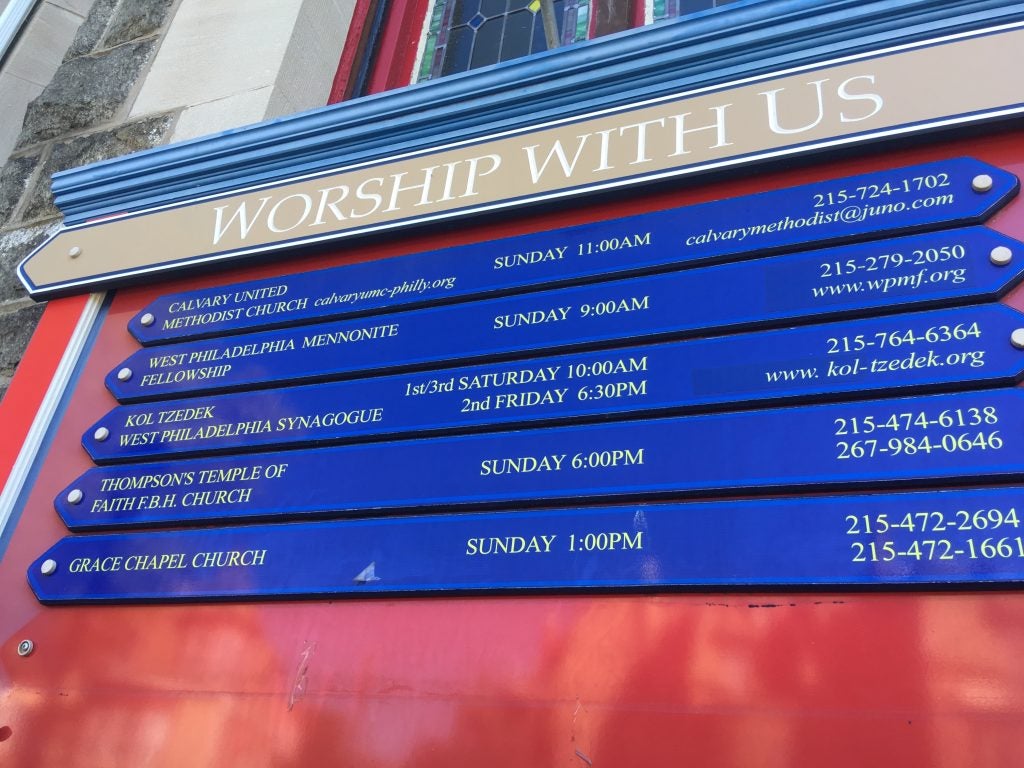
Gillen compared Philadelphia to Seattle, Amazon’s current home. “I believe something like only 25 percent of Seattle’s housing stock is affordable to the typical Seattle household. The number in Philly is the opposite of that: It’s more like 75 percent of our housing stock is affordable.”
Gillen notes that the neighborhoods adjacent to wherever Amazon would move could expect to see big, demand-driven spikes in housing costs. Robert Inman, a professor at the Wharton School, said certain nearby suburbs would also probably see a big jump in housing prices. Amazon workers would move to “the suburbs and the nicer neighborhoods of Philadelphia,” said Inman.
Kitty Heite is afraid she knows exactly what Amazon would do to Philadelphia. Heite, a mother of four living in West Philadelphia with her partner, lived in Seattle during the start of the tech boom there, leaving in 2010 — just as Amazon started to build its massive, 33-building campus downtown.
Seattle has become a posterchild for income inequality, a place where high-end, high-tech jobs drive prices ever higher on everything from homes to food, while wages for working stiffs stagnate. That’s led to lower-income residents getting pushed out by wealthier tech workers who can afford to pay rents that average around $2,000-a-month.
As the long-term locals left, lots of small businesses found themselves without their loyal customers, Heite said. Soon enough, they closed and corporate chains moved in.
“In time that I lived there, [the Seattle neighborhoods of] Capitol Hill and Central District went from being really vibrant, diverse, mixed income communities to being a very expensive, very white, very bland kind of neighborhoods,” said Hite.
She’s worried the same thing will happen here if Amazon comes, leading to skyrocketing rents that push out the most vulnerable people in America’s poorest big city.
But, Gillen argues, the discomfort from displacement beats the alternative.
“These are the growing pains you have when you attract employers and are a growing city,” said Gillen. “As I remind people, gentrification displacement is not pleasant there are genuine people who are hurt from it, but if you think gentrification is bad, remember the opposite of gentrification is abandonment, depopulation and dislocation.”
For the most part, city officials agree with Gillen, and they threw everything behind the city’s bid. Rob Wonderling, president of the Philadelphia Chamber of Commerce, told the Inquirer that Philadelphia’s bid offered Amazon $1 billion in state and local tax breaks to come. Officials say Philly would handle the influx from Amazon. Philadelphia has around twice the land mass as Seattle, plus around 40,000 vacant properties. The region, it’s argued, has the space to absorb not only the Amazon workers — many of whom would move here from outside the region or would be recent graduates of nearby schools who would have otherwise left — but the workers from all of the appurtenant companies that would follow Amazon here, as well.
What happened in Seattle, they argue, wouldn’t happen here.
Heite disagrees.
“But it did happen in Seattle. And it happened in San Francisco and it’s happening in New York,” said Heite. “It happened in all these cities, even though people were like, ‘oh it can’t possibly happen here, this city is too diverse, too big, too whatever.’”
“It still happened.”
One thing is certain: If Amazon picks Philly, things would be different here. Then again, change is constant, especially in a big city.
You might just say that change is an unavoidable quality of life.
WHYY is your source for fact-based, in-depth journalism and information. As a nonprofit organization, we rely on financial support from readers like you. Please give today.




